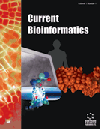
Full text loading...
Chimeric Antigen Receptor (CAR)-T cell therapy has emerged as a highly effective treatment for hematological tumors. However, the associated adverse reaction, Cytokine Release Syndrome (CRS), poses a significant challenge. While numerous studies have investigated CRS biomarkers during CAR-T cell therapy, the ability to predict CRS risk prior to treatment initiation remains a crucial yet underexplored aspect.
The primary purpose of this study was to address the issue of limited data, explore an alternative approach using public data to identify predictive markers for CRS risk assessment from RNA-Seq in pre-treatment patients data, and comprehend the inducible mechanisms underlying CRS.
We integrated information from two public databases, the FDA Adverse Event Reporting System (FAERS) for adverse reaction reports of CAR-T cell therapy and the Cancer Genome Atlas (TCGA) for RNA-Seq data on corresponding hematological tumors. Candidate genes were screened by correlation analysis between Reported Odds Ratio (ROR) values and RNA-Seq gene expression levels, and then core factors were identified through stepwise analysis of pathway enrichment, cluster analysis, and protein interactions.
Our analysis highlighted the correlation between CRS risk and pre-treatment T cell activation/proliferation, identifying key genes (IFN-γ, IL1β, IL2, IL6, and IL10) as significant CRS indicators.
This study offers a unique perspective on predicting CRS risk before CAR-T cell therapy, circumventing the challenges of scarce clinical data by leveraging analysis of public databases. It elucidates the crucial role of T cell activation/proliferation dynamics in CRS. The analytical methods and identified markers provide a reference for the research and clinical application of CAR-T cell therapy.

Article metrics loading...

Full text loading...
References


Data & Media loading...

